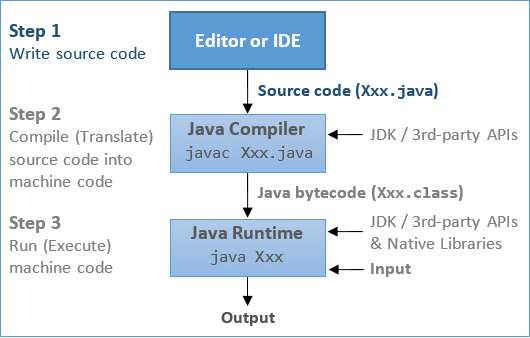C++ Map Random Key Generator Multiple Same Keys
Serial Key Generator is application created for software developers who want to protect their applications by serial key registration. Just in a few clicks you are able to generate serial keys for your C#.NET, Visual Basic.NET, Delphi, C Builder and Java applications. A Base32-Crockford encoded API Key generator, validator, and converter to turn UUIDs into human readable API Keys. Uuid; apikey. Random Key Generator for Passwords, Encryption Keys, WPA Keys, WEP Keys, CodeIgniter Keys, Laravel Keys, and much more. Don't got what you're looking for! Send us a mail or contribute on Github. KeyGen.io - Random Key Generators. Decent Password. Strong Password. Very Strong Password. CodeIgniter Encryption Key.
-->
Creating and managing keys is an important part of the cryptographic process. Symmetric algorithms require the creation of a key and an initialization vector (IV). The key must be kept secret from anyone who should not decrypt your data. The IV does not have to be secret, but should be changed for each session. Asymmetric algorithms require the creation of a public key and a private key. The public key can be made public to anyone, while the private key must known only by the party who will decrypt the data encrypted with the public key. This section describes how to generate and manage keys for both symmetric and asymmetric algorithms.
Symmetric Keys
The symmetric encryption classes supplied by the .NET Framework require a key and a new initialization vector (IV) to encrypt and decrypt data. Whenever you create a new instance of one of the managed symmetric cryptographic classes using the parameterless constructor, a new key and IV are automatically created. Anyone that you allow to decrypt your data must possess the same key and IV and use the same algorithm. Generally, a new key and IV should be created for every session, and neither the key nor IV should be stored for use in a later session.
C++ Map Random Key Generator Multiple Same Keys 2017
Sampling method. Sample is the wrong kind of sampling here since it draws k random samples from the given population/alphabet without repetition.Instead you should should use choices which allows repetition of the same items. Normally you want as much entropy as possible in the given “space” (here: k = 15 items chosen from N = 66 Arabic digits, basic Latin letters and some punctuation). This class provides the functionality of a secret (symmetric) key generator. Key generators are constructed using one of the getInstance class methods of this class. KeyGenerator objects are reusable, i.e., after a key has been generated, the same KeyGenerator object can be re-used to generate further keys. (C) RSA Encrypt/Decrypt AES Key. Demonstrates how to use RSA to protect a key for AES encryption. It can be used in this scenario: You will provide your RSA public key to any number of counterparts. Your counterpart will generate an AES key, encrypt data (or a file) using it, then encrypt the AES key using your RSA public key.
To communicate a symmetric key and IV to a remote party, you would usually encrypt the symmetric key by using asymmetric encryption. Sending the key across an insecure network without encrypting it is unsafe, because anyone who intercepts the key and IV can then decrypt your data. For more information about exchanging data by using encryption, see Creating a Cryptographic Scheme.
The following example shows the creation of a new instance of the TripleDESCryptoServiceProvider class that implements the TripleDES algorithm.
When the previous code is executed, a new key and IV are generated and placed in the Key and IV properties, respectively.
Sometimes you might need to generate multiple keys. In this situation, you can create a new instance of a class that implements a symmetric algorithm and then create a new key and IV by calling the GenerateKey and GenerateIV methods. The following code example illustrates how to create new keys and IVs after a new instance of the symmetric cryptographic class has been made.
When the previous code is executed, a key and IV are generated when the new instance of TripleDESCryptoServiceProvider is made. Another key and IV are created when the GenerateKey and GenerateIV methods are called.
Asymmetric Keys
The .NET Framework provides the RSACryptoServiceProvider and DSACryptoServiceProvider classes for asymmetric encryption. These classes create a public/private key pair when you use the parameterless constructor to create a new instance. Asymmetric keys can be either stored for use in multiple sessions or generated for one session only. While the public key can be made generally available, the private key should be closely guarded.
A public/private key pair is generated whenever a new instance of an asymmetric algorithm class is created. After a new instance of the class is created, the key information can be extracted using one of two methods:
Random Key Generator Music
The ToXmlString method, which returns an XML representation of the key information.
The ExportParameters method, which returns an RSAParameters structure that holds the key information.
Both methods accept a Boolean value that indicates whether to return only the public key information or to return both the public-key and the private-key information. An RSACryptoServiceProvider class can be initialized to the value of an RSAParameters structure by using the ImportParameters method.
/wwwgithubcom-generating-ssh-keys-platform.html. Asymmetric private keys should never be stored verbatim or in plain text on the local computer. If you need to store a private key, you should use a key container. For more on how to store a private key in a key container, see How to: Store Asymmetric Keys in a Key Container.
The following code example creates a new instance of the RSACryptoServiceProvider class, creating a public/private key pair, and saves the public key information to an RSAParameters structure.



